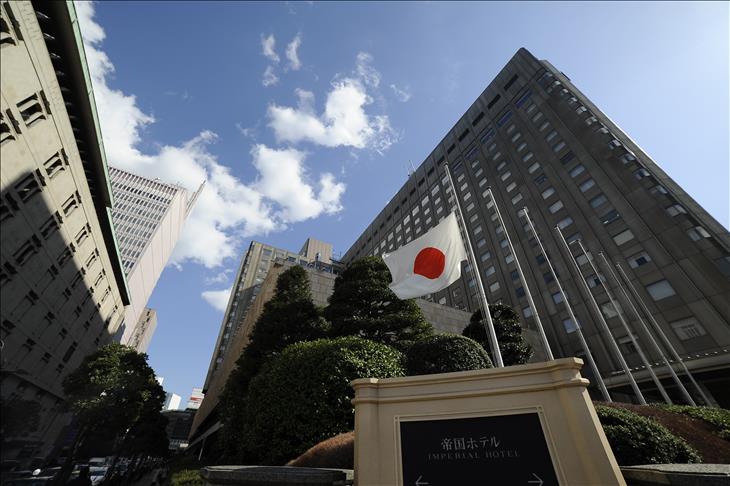
By Todd Crowell
TOKYO
Japan used to be aloof from the three-way chess game of conflicting territorial claims in the South China Sea. Tokyo was pre-occupied with its own territorial dispute with China over a group of uninhabited islands in the East China Sea, known as the Senkaku in Japan and the Daioyu in China.
However, quietly encouraged by the U.S., Japan is moving not so stealthily into a new arena of potential conflict by forging security ties with Vietnam and the Philippines, the two Southeast Asian countries at the fore of territorial disputes with China.
The two nations share claims with Malaysia, Brunei and Taiwan to various reefs and atolls in the South China Sea. Vietnam claims all of the islands in the northern tier, known as the Paracels. Malaysia, Taiwan, Brunei and the Philippines claim specific islands in the southern Spratly group.
Beijing claims them all and has been increasingly aggressive in asserting control, not just with rhetoric but with land-fill and concrete. It is busy turning four reefs and atolls that are barely above water at high tide into artificial islands complete with docking facilities and gun emplacements.
Japan has no territorial claims in the South China Sea, even though several islands were garrisoned by the Imperial Navy during World War II. Additionally, a strict reading of its pacifist constitution limits Japan’s military strictly to the defense of the home islands.
That has not prevented Japan from forging security partnerships with the front-line nations and in some instances providing hardware and training. These are complimented by regular meetings of deputy defense ministers.
Both Vietnam and the Philippines have weak navies but are acquiring more warships and patrol vessels, some from Japan. The first of ten coast guard vessels that Japan is building for the Philippines should be delivered by the end of the year. Six more coast guard ships will be delivered to Vietnam.
In the past year, Vietnam has taken possession of three modern kilo-class submarines purchased from Russia. Two more are on the way.
Meanwhile, Moscow has been pressuring Hanoi to allow its warships to use the extensive port facilities at Cam Ran Bay, mostly built by the U.S. Navy during the Vietnam war.
Japan and the Philippines will hold joint naval exercises this spring, yet considering the tiny size of the Philippine navy, the maneuvers might be dominated by Japanese vessels. Some trainers have been sent to Vietnam to help man the new submarines.
Under its conservative prime minister, Shinzo Abe, Japan’s military posture is rapidly changing. Just last month the government revised the Overseas Development Program, its civilian foreign aid scheme, to allow Tokyo to provide military aid and assistance abroad.
The Abe government has also ended the prohibition of weapons exports, although much of the hardware may be too expensive or too sophisticated for countries like the Philippines and Vietnam. However, Australia is interested in buying more modern submarines from Japan.
Some of the other countries around the South China Sea littoral are becoming increasingly anxious about China’s intentions and are seeking to improve security ties with other nations.
Just last week, defense ministers from Malaysia and the Philippines met in Manila and agreed that their deputy defense ministers will consult on a regular basis. The meeting was noteworthy as Malaysia, which claims several islands in the south Spratlys, usually prefers a softer approach.
“The two ministers re-affirmed the importance of… unimpeded trade and freedom of navigation and overflight in the South China Sea,” the Philippine Department of National Defense said in a statement.
The Philippines has also taken the step of filing a complaint against China with the UN International Tribunal on the Law of the Sea, pointing specifically to the “nine-dash line” on official Chinese maps that seems to suggest that Beijing claims the entire South China Sea as its sovereign territory. Beijing has not responded.
Japan is currently revising the legal framework of its military to provide a “collective defense” that would permit Japanese armed forces to partner with the militaries of allies, such as the U.S., or those with which it has a “close relationship,” such as the Philippines.
While Japan does not have any territorial claims in these waters, it does have a vital interest in maintaining open seas and peaceful passage through the South China Sea. Much of the country’s trade and all of its petroleum imports pass through these waters.
Washington has the same interest in maintaining free passage in these waters, which is why it has been quietly encouraging Tokyo to take a more active role in the region.
Adm. Robert Thomas, commander of the U.S. 7th Fleet in the Western Pacific, raised eyebrows across Asia earlier this year when he suggested that he favored regular air patrols by the Japanese air force and navy over the South China Sea. “Such an operation in the South China Sea makes sense in the future,” he said.
Japan’s defense minister, Gen Nakatani, said there were no plans for Japanese forces to intrude on the waters in such an open way although he has said that “the situation in the South China Sea is having a [direct] impact on Japan’s national security."
Meanwhile, in China, the People’s Liberation Army Daily commented: “The US and Japan are acting in tune with each other on the South China Sea issue."
Anadolu Agency website contains only a portion of the news stories offered to subscribers in the AA News Broadcasting System (HAS), and in summarized form. Please contact us for subscription options.








